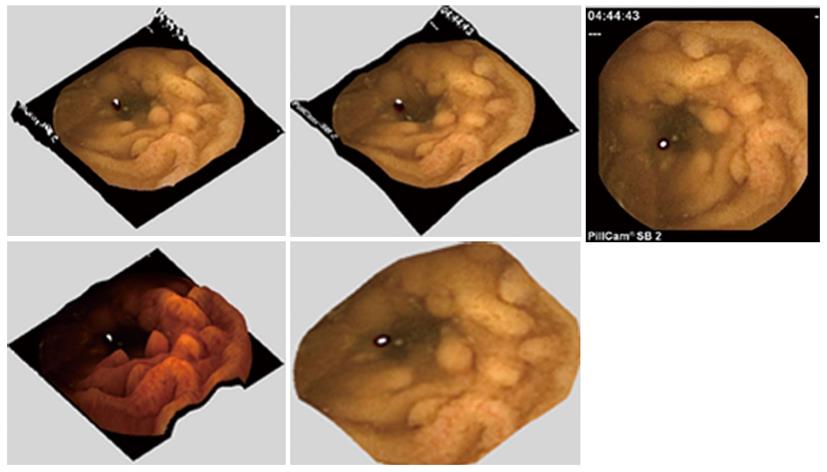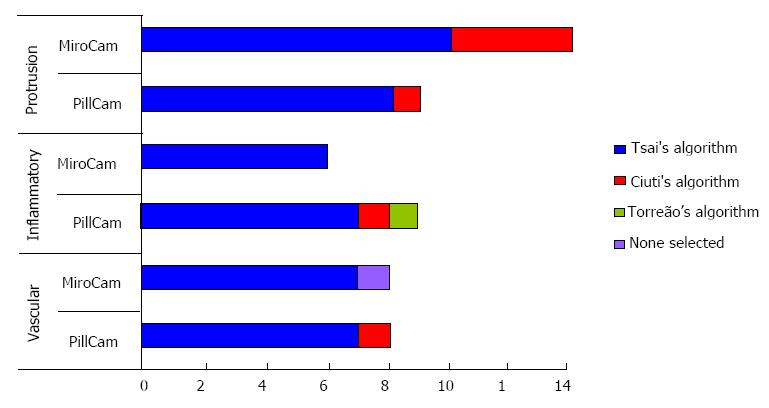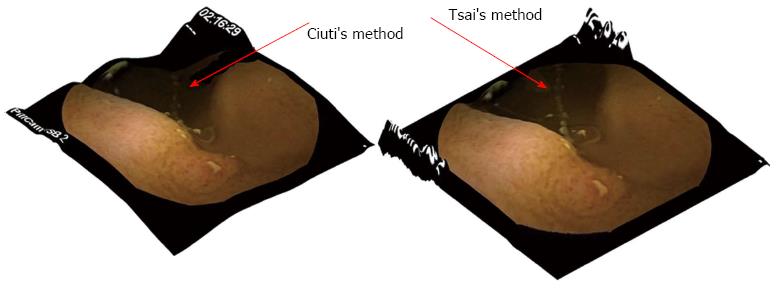Copyright
©2013 Baishideng Publishing Group Co.
World J Gastroenterol. Nov 28, 2013; 19(44): 8028-8033
Published online Nov 28, 2013. doi: 10.3748/wjg.v19.i44.8028
Published online Nov 28, 2013. doi: 10.3748/wjg.v19.i44.8028
Figure 1 Shape-from-Shading function.
Capturing a surface using a camera removes depth information. Shape-from-Shading (SfS) techniques try to reproduce the missing depth information from a given two-dimensional (2-D) image.
Figure 2 For the evaluation phase, a Mathworks© Matlab program with a graphic user interface was developed.
The program consists of two windows in which the conventional two-dimensional capsule endoscopy image (single frame at the right side/window of the graphic user interface screen) and its corresponding three-dimensional represented images (four, one for each of the 4 shape-from-shading under evaluation) were presented to the reviewer.
Figure 3 Assessment results for the 4 Shape-from-Shading algorithms per lesion category.
Figure 4 Ciuti’s algorithm (left) and Tsai’s method (right).
Although Tsai’s method is very straightforward and to an extent simplistic, it provides satisfying results. Ciuti’s et al[16] algorithm, on the other hand, uses a more advanced model that makes things in the background appear darker than in Tsai’s model.
- Citation: Karargyris A, Rondonotti E, Mandelli G, Koulaouzidis A. Evaluation of 4 three-dimensional representation algorithms in capsule endoscopy images. World J Gastroenterol 2013; 19(44): 8028-8033
- URL: https://www.wjgnet.com/1007-9327/full/v19/i44/8028.htm
- DOI: https://dx.doi.org/10.3748/wjg.v19.i44.8028
















